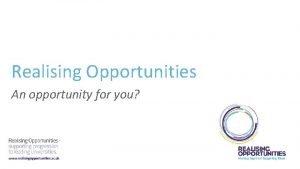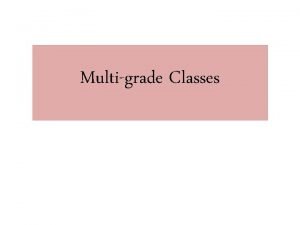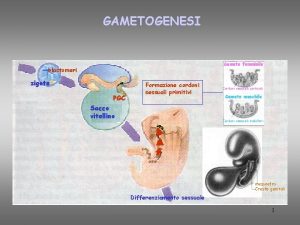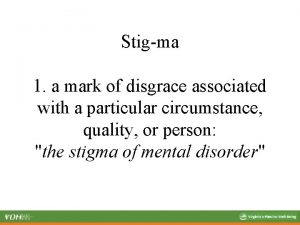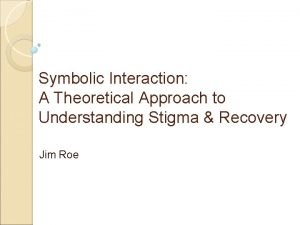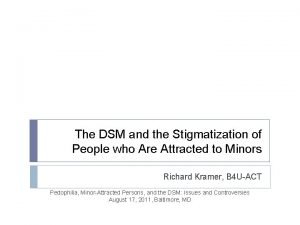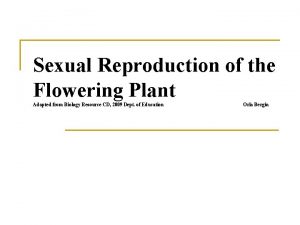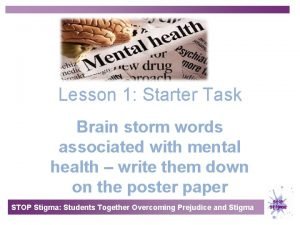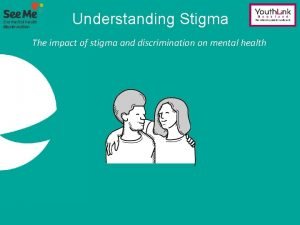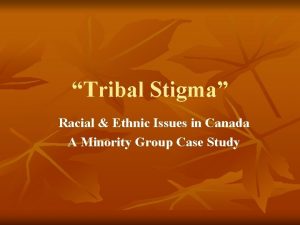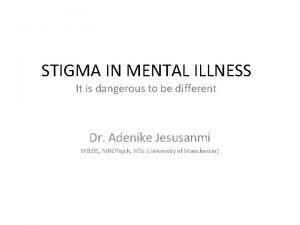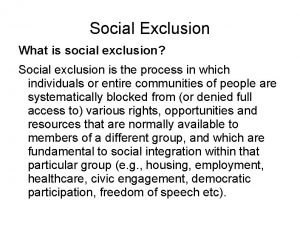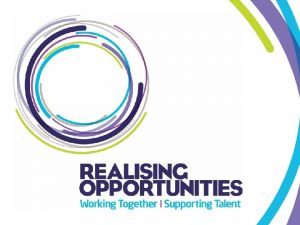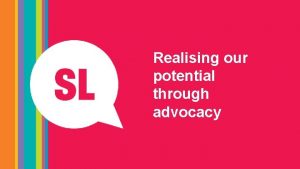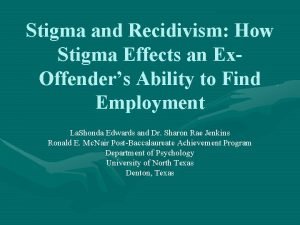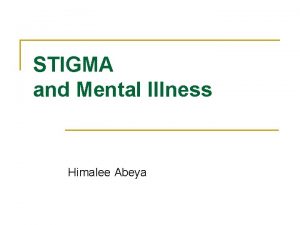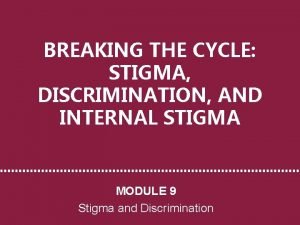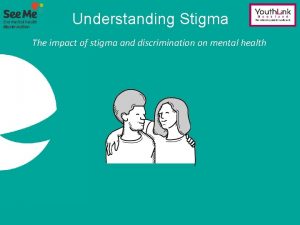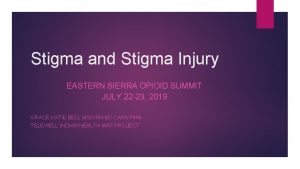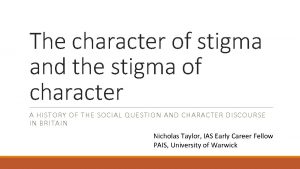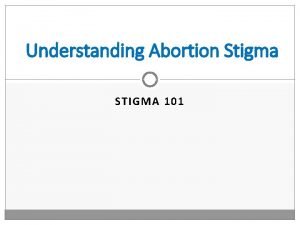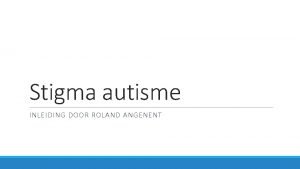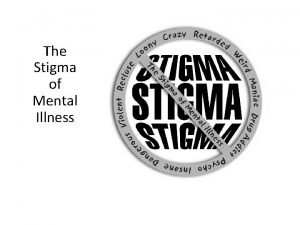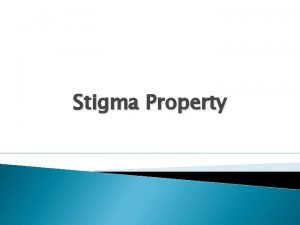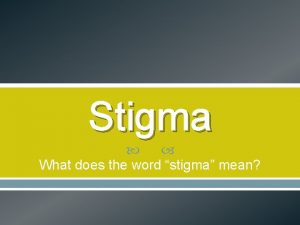Stigma exclusion and access to community capital Realising


















- Slides: 18

Stigma, exclusion and access to community capital: Realising a therapeutic landscape of recovery Professor David Best Sheffield Hallam University / Turning Point

@SHULaw. Crim www. shu. ac. uk/dlc/helena-kennedy-centre The central values of the Centre: - widening access to justice - promotion of human rights - ethics in legal practice - overcoming social injustice - enabling desistance and recovery - promoting criminal justice accountability The Centre has the following goals: - to impact on policy and provide advocacy - to innovate in teaching and education - to produce research and scholarship work - to support local, national and international projects and events

Best and Laudet (2010) Personal Recovery Capital Social Recovery Capital Collective Recovery Capital

Dingle et al (2012): Personal, social and functional growth

Public perceptions of addicts – Phillips and Shaw (2013) • Social distance study using vignettes • Four populations: smokers, obese people, active and recovering addicts • Addicts most discriminated against • US population generally do not believe in ‘recovery’ • This is negative recovery capital, particularly if it is true of professionals

Phillips and Shaw • “Individuals who are actively using substances and even individuals in remission from substance misuse are still targets of significant stigma and social distancing”

Extending the stigma research to trainee professionals • 303 criminal justice and allied health students across all three years at Sheffield Hallam • Liaised with Lindsay Phillips about vignettes • Amended to four new populations active or recovering / desisting: – Heroin addicts – Alcoholics – Violent drinkers – Child offenders

Social distance scores for four key groups 35 31. 2 29. 2 30 26. 9 26. 7 24. 3 25 21 20 18 16. 4 Active Desisting 15 10 5 0 Heroin addicts Alcoholics Violent drinkers Child offenders

Implications • Students do believe in the possibility of change to some extent • However, this is not ubiquitous across all problem behaviours • This does not change much over their period of study • In other words, stereotypes and negative community capital remains intact

An innovative model: Jobs, Friends and Houses • A social enterprise developed by Lancashire Police • Blackpool is an area of significant deprivation and dislocation • Standard treatment pathways but with increased emphasis on prison release (Gateways) • The aim is to build a recovery community

Jobs, Friends and Houses Transforming the building stock in the town Physically building a recovery community Providing a recovery housing pathway Providing meaningful employment and training (8 week Build It Up course then 2 -year apprenticeship) • Increasing the visibility of recovery • Create a sense of collective pride • •

JFH: Visible and recognisable identity

JFH clothing range!

Why is JFH so important? • It is a collective social identity • Participants can buy into the vision and the group dynamic • It provides houses, skills, jobs and pride • There are pathways to ‘real’ jobs • It can engage individuals who have failed and been failed by the treatment system

A Facebook social network map of JFH

Social Identity Model of Recovery (SIMOR)


• Recovery and desistance are social contracts that require personal and social change and community buy-in • Communities can be therapeutic or hostile and get what they give • JFH is a great opportunity to live social justice CONTACTS D. Best@shu. ac. uk David. Best@monash. edu 0114 225 5435
 Hgios challenge questions
Hgios challenge questions Realising opportunities
Realising opportunities Stigma associated with failure and repetition is removed
Stigma associated with failure and repetition is removed Inc
Inc Part of flower comprising stigma style and ovary
Part of flower comprising stigma style and ovary Parts of a leaf
Parts of a leaf Follicolo preantrale
Follicolo preantrale 38
38 The mark
The mark Stigma image
Stigma image Associatief stigma
Associatief stigma Symbolic stigma
Symbolic stigma Stigma image
Stigma image Stigma function
Stigma function Stigma image
Stigma image Keratan membujur testis
Keratan membujur testis What is stigma
What is stigma Tribal stigma
Tribal stigma What is stigma
What is stigma

